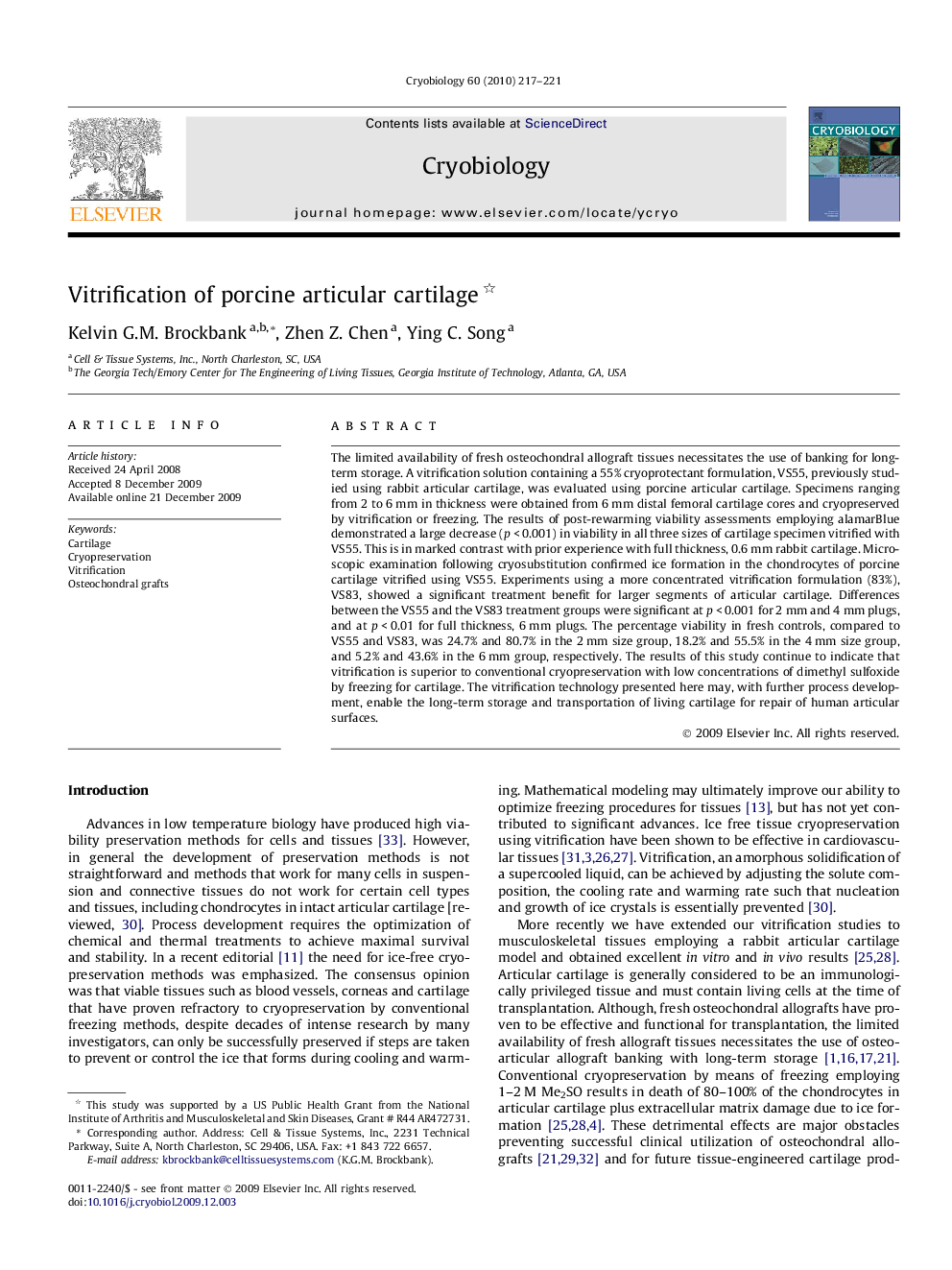| Article ID | Journal | Published Year | Pages | File Type |
|---|---|---|---|---|
| 2168818 | Cryobiology | 2010 | 5 Pages |
The limited availability of fresh osteochondral allograft tissues necessitates the use of banking for long-term storage. A vitrification solution containing a 55% cryoprotectant formulation, VS55, previously studied using rabbit articular cartilage, was evaluated using porcine articular cartilage. Specimens ranging from 2 to 6 mm in thickness were obtained from 6 mm distal femoral cartilage cores and cryopreserved by vitrification or freezing. The results of post-rewarming viability assessments employing alamarBlue demonstrated a large decrease (p < 0.001) in viability in all three sizes of cartilage specimen vitrified with VS55. This is in marked contrast with prior experience with full thickness, 0.6 mm rabbit cartilage. Microscopic examination following cryosubstitution confirmed ice formation in the chondrocytes of porcine cartilage vitrified using VS55. Experiments using a more concentrated vitrification formulation (83%), VS83, showed a significant treatment benefit for larger segments of articular cartilage. Differences between the VS55 and the VS83 treatment groups were significant at p < 0.001 for 2 mm and 4 mm plugs, and at p < 0.01 for full thickness, 6 mm plugs. The percentage viability in fresh controls, compared to VS55 and VS83, was 24.7% and 80.7% in the 2 mm size group, 18.2% and 55.5% in the 4 mm size group, and 5.2% and 43.6% in the 6 mm group, respectively. The results of this study continue to indicate that vitrification is superior to conventional cryopreservation with low concentrations of dimethyl sulfoxide by freezing for cartilage. The vitrification technology presented here may, with further process development, enable the long-term storage and transportation of living cartilage for repair of human articular surfaces.
